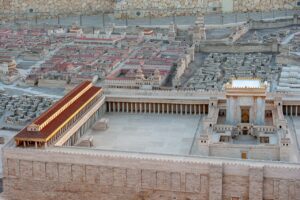
Although there are many traces throughout the Apostolic Writings, the Book of Revelation by John in particular shows as part of its structure that synagogue liturgy after the destruction of the Jerusalem temple. This event was God’s opportunity to implement all the updates given by the Messiah regarding the jukim and the liturgical system designed by David, which had been implemented throughout the history of the temple and synagogues.
Thus, starting from chapter 4, one can see elements like the Amidah, Keriat HaTorah, Tachanun, etc. This book is not a Sidur in itself, but it illustratively bases itself on the elements or sections that constitute the Sidur lived by the apostles and the churches of Asia Minor to which it was written.
For example, studying the Gospels might raise a question regarding the topic of liturgy: If Jesus taught a standing Tefilah that by its nature substitutes the Amidá does that mean his eighteen blessings and all their significance became obsolete? Much speculation could arise, but upon reaching Revelation 4:8-9, the Kedushah (third blessing of the eighteen and the most important of all) appears in the midst of celestial worship, confirming that by the time of the churches in Asia Minor, they understood the significance of Kedushah and its importance. Moreover, the absence of the complete Amidah speaks to the strength of their oral tradition, which required no explanation for its absence.
Therefore, just as studying the Book of Revelation by John is important for understanding the Sidur, the practical application of the Sidur under Messianic updates will also facilitate the study of this book.
Author: Dr. Liber Aguiar.
0 Comments